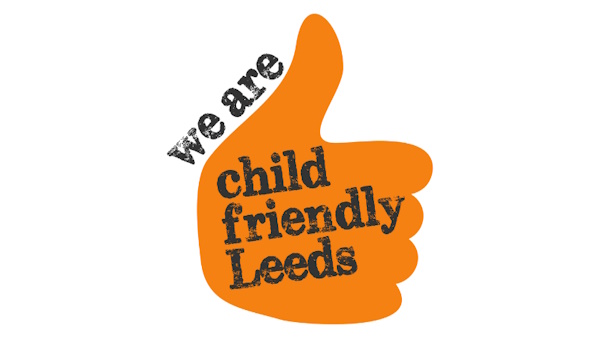What having a voice and influence means
Children, young people and their parents and carers have a right to be involved in decisions that affect their lives. Having a voice and influence means they feel that their voices are listened to, valued and can influence decisions and actions.
We use the term ‘voice and influence’ as children and young people have told us they want one definition because there are so many different terms, for example, participation, empowerment, and active engagement, that it can be confusing.
Why we are doing it
Leeds has a bold ambition to be the best city for children and young people - a child-friendly city. At the heart of making this a reality is a commitment to working restoratively with children, young people, parents and carers so that their voices are at the heart of decisions that affect them.
There is strong evidence that working with children, young people, parents and carers wherever possible instead of doing things to them or for them produces better outcomes and helps to build confidence and resilience.
Listening consistently to the voices of children, young people and families is central to the culture Leeds is working to create. This is evident in:
- Leeds’s children and young people’s 12 wishes for what makes a child friendly city. Wish 3 is that ‘Children and young people express their views, feel heard and are involved in decisions that affect their lives’
- The city’s Children and Young People’s Plan. One of the five outcomes in the plan is that ‘All children and young people are active citizens who feel they have voice and influence’
- Article 12 of the UN convention on the rights of the child, which states that ‘every child and young person has the right to express their views freely - about everything that affects them’
Giving a voice and influence to children, young people, parents and carers in decision-making demonstrates our commitment to them and acknowledges their right to shape their own future. It increases trust and can enable positive change, even in complex situations.
Practitioners can feel confident that decisions are informed by what children, young people, parents and carers say they want and need, which should lead to better quality services, saving money and using resources more effectively.
How we give a voice and influence to children, young people and their families
Working restoratively to listen and respond to the voices of children and young people is fundamental to the front-line work that takes place every day across the city. Children, young people, parents and carers voices should be considered at all levels:
At an individual level
They are involved in making choices and influencing decisions about their own lives, for example, co-producing their education, health and care plan, or a child working with their teacher to agree on their learning targets.
At a family level
All members of the family are involved in sharing their views, making choices and influencing decisions that affect their family. For example, a range of family members would be directly involved in developing an action plan at a Family Group Conference.
At a service level
They are involved in shaping and influencing how services they use are planned, delivered and evaluated. Feedback is sought in a range of ways and routinely informs service improvement, for example by involving them in developing communication materials and consulting them on the type of activities provided.
At a strategic level
They influence local or city-wide priorities and agendas, for example, in staff recruitment panels for senior leaders or representing their peers on a city-wide or local forum where they make recommendations or advise decision-makers.
Available help
The Voice, Influence and Change Team (VIC) can support services when planning a specific piece of work to get the views of children, young people, and their parents and carers. It is important to be clear from the start what the purpose and outcomes of the work are and to provide feedback afterwards to those who have taken part about how you acted on their views. It is also important to check from the outset that there are not existing consultations that would provide you with the same information.
The team can share and promote voice and influence good practice and opportunities across our network of children, young people, parents, carers, schools and youth voice groups within the city, for example, young people who are LGBT, looked after, SEND, young carers, refugees and asylum seekers, etc.
Key contacts and more information
Email the Voice Influence Change Team at: VIC@leeds.gov.uk.
Instagram: @leedsyouthvoice
Twitter: @leedsyouthvoice
Printable version
